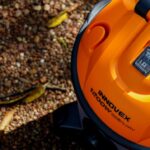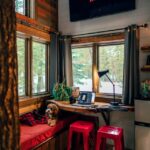
4 Important Fire Safety Codes for Industrial Buildings
In the 1980s, California passed a law identifying building codes for businesses. Referred to as Title 24, these regulations provide guidelines for owners on protecting employees and customers from possible disasters, ensuring that the structure is in proper order. Within this writing, proprietors can learn about requirements for installation of fire code California. The following are protective devices that your facility, by code, should have.
1. A Water Source
In case of fire, it’s vital to have a large water source available to quench the flames. Depending on the size of the building, it may require more than the hookup to the outdoor fire hydrant. Be sure that you have a reservoir, tank or mainline available. The flow should remain consistent as well, so be sure to have this tested to ensure functionality. If hydrants are over 400 feet away from the structure, an on-site hydrant or mainline assists fire crews immensely.
2. An Emergency Communication System
When crews enter a large building, communication is pivotal to continue working together; therefore, the law establishes that businesses should have emergency responder radio coverage. The people on the outside should be able to locate others and discuss obstacles for recovery. Be sure to have a standby power supply, and the owner is responsible for frequency modifications.
3. An Access Roads
Is your building capable of having a fire truck easily park near the facility? The better access a team has, the faster the staff may get to work. Title 24 discusses the construction of access roads for firetrucks, offering 150 feet of space for the vehicle to park. 20 feet of width is mandated, and the entire vicinity should be unobstructed (that includes vertically) so that high rise and storage facilities are accessible up top. If this is not possible, then other systems should be implements to help slow the blaze.
4. A Fire Sprinkler System
Areas in which people walk around should be equipped with fire sprinkler systems. These units are triggered when smoke rises, causing the release of water. The moisture should begin to saturate the room, keeping the fire at bay and allowing others to exit with more time. While this device may not eliminate the conflagration, it hopes to mitigate it until additional professional assistance arrives.
With the proper fire measures in place, owners may save staff lives and minimize property loss. Title 24 laid out rules such as these to aid landlords in understanding what should be done to best help. Keep in mind that you should think about what is in and around the facility, giving fire crews better access and communication.


















